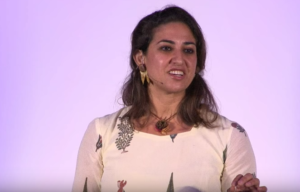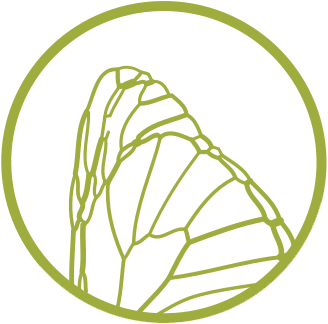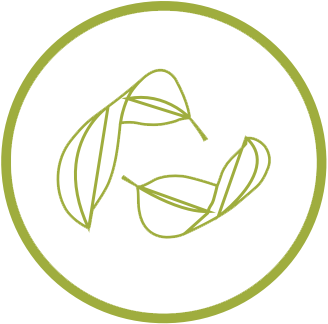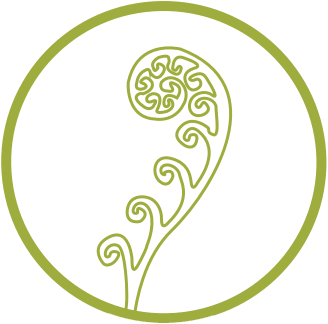
Maybe you’ve just shed years of sweat and tears to earn a PhD in environmental engineering and swore off academics forever. Perhaps you’re an active biologist, yet you discover an irresistible learning opportunity with only hours until the application deadline.
Or maybe you’ve retired from a 30-year career and are ready to enjoy long walks in the woods, but somehow find yourself seeking transcripts from eons ago so you can go back to school. We’ve heard these stories, and many more, of biomimicry’s compelling pull, one that has enticed professionals to dive head first into provocative learning journeys–journeys that ultimately have led to new career opportunities they hadn’t considered before.
In fact, of all the current and past students in our Master’s of Science in Biomimicry program run in collaboration with Arizona State University, 29% already have graduate degrees (and almost 50% do in our graduate certificate).
What is it about the discipline that draws people in and changes lives? Here we share learning journeys of two professionals inspired to jump back into academics upon discovering biomimicry:
Johnson & Johnson taps ASU student as first biomimicry expert

Dr. Ayla Kiser will graduate with her Master’s of Science in Biomimicry from Arizona State University next year. Even while in school, she’s already using her biomimicry training to take on the task of expanding biomimicry’s presence at one of the world’s largest consumer product companies.
As Johnson & Johnson’s post doctoral scientist in biomimicry, Ayla is the company’s first in-house biomimicry expert who will help guide sustainable innovation initiatives and projects by infusing them with innovation inspired by nature.
“The company has launched a biomimicry pillar…now that I’ve joined I’m the person representing biomimicry,” Ayla said. “I’ve come with a really great set of tools so I was able to hit the ground running when I started at Johnson & Johnson. The material I’ve learned from the MS program is just flowing into my work every day.”
This latest career highlight comes years after Ayla, who earned her PhD in environmental engineering at ASU in 2011, was first inspired by biomimicry in 2009 when she heard Janine Benyus talk at ASU. Ayla was instantly fascinated by the out-of-the-box and innovative thinking it inspired.
She began introducing the methodology to her students during her work as a teacher’s assistant and teacher in the environment engineering classes.
“Whenever I talked about biomimicry with other people I could feel the sparks flying,” she said.
Although she thought she would never get another degree after finishing her PhD, she couldn’t quite shake the feeling of wanting more from biomimicry. When she found out the MS program launched at ASU in 2015, Ayla headed back to school.
“I could not resist the opportunity to do this program. I knew it was one of a kind and would give me the deepest education in biomimicry available today,” she said.
Ayla anticipates graduating from the MS program in Fall 2018. She’s also on track to earn her Biomimicry Professional certification from Biomimicry 3.8 in Spring 2018.
“It lived up to my expectations and then some,” she said of the programs. “Stepping out of academia and into a professional position in biomimicry in industry, I can really appreciate how much the program is serving me.”
It’s prepared her to help biomimicry make a meaningful impact at Johnson & Johnson—and beyond.
“I’m excited this multinational company wants to use biomimicry to innovate sustainably,” she said. “I think it’s just the beginning of things to come.”
Read more about Ayla’s career and work here.

‘Life-changing’ biomimicry journey takes biologist from Cairo to ASU
A chance internet search led Sara El-Sayed to begin her “life-changing” biomimicry learning journey.
Sara, a biologist currently studying the application of biomimicry to sustainable food systems for her PhD in Sustainability at Arizona State University, was researching technologies that influence biodiversity for her job at a outdoor education center in Cairo, Egypt, when she stumbled upon biomimicry.
“Totally by luck, I bumped into the term,” she said.
She spent all day researching, which led to discoveries of TED Talks, resources, training programs, and more, all focused on biomimicry. Her search also led her to discover Biomimicry 3.8’s Certified Biomimicry Professional program (with a deadline the next day!).
“I graduated (from college) in 2002, and I didn’t think I’d get back to academics. When I saw this I said, ‘This is it. This is what I want to study,’ ” she said. “I applied right then and there.”
In one night, she went from discovering biomimicry to applying for the Biomimicry Professional program, a one-of-a-kind, two-year program that now combines the Master’s of Science in Biomimicry from ASU Online and six in-person immersion sessions that take participants around the world with a diverse, elite cohort of professionals.
Sara was selected for the 2011-2013 Certified Biomimicry Professional cohort and joined 15 others for the program’s first immersion week in the Sonoran desert in January 2011.
“It was a transformative experience. From the first day, I strongly connected with this cohort… We had amazing naturalists guiding us through this fantastic ecosystem. We did things like guided meditations and visualizations,” she said. “It all made for an experience that really makes you want to change things.”
While she was disconnected from the outside world for that week in the desert, Egypt experienced unprecedented demonstrations that forced the country’s long standing president from power.
“Living under a dictatorship, I thought nothing could change. But there I was, coming from this experience where anything is possible. Alongside going through the biomimicry experience, I was experiencing a completely changed country,” she said.
Biomimicry helped her find the resilience and strength she needed in such times of turbulence.
Once she earned her Biomimicry Professional certification in 2013, she began working in Egypt use biomimicry to find ways to improve food and agricultural systems, a mission that had long been part of her work.
She also founded Dayma, a company that provides immersion trips that incorporate biomimicry for students and youth throughout Egypt’s “most wondrous natural destinations.” So far, Dayma has taken more than 2,500 students on immersion outings.
Her TEDxWWF talk from 2013 has almost 4,000 views.
Although the Biomimicry Professional program did not include the ASU portion until 2015, Sara was able to additionally earn her MS from ASU through a collaboration with Biomimicry 3.8 that recognized the coursework already taken.
In the latest step in her inspiring learning journey, Sara recently moved with her family from Egypt to Arizona, where she’s studying sustainability and working as a researcher at the Biomimicry Center on ASU’s Tempe campus.
“Being here at ASU,” Sara said, “being part of a group of people who are creating great innovations, is amazing.”
See Sara’s TEDxWWF talk here. Learn more about Dayma here.
Learn more about the Master’s of Science in Biomimicry
The first of it’s kind in the world, this Master’s of Science in Biomimicry is accredited through ASU, allowing students to apply their existing disciplinary knowledge to the practice and advancement of biomimicry. The exclusively online coursework consists of 30 credits, including core courses, electives, and practicum courses. It can be taken part-time for working professionals.
Learn more about the Graduate Certificate
Accredited through ASU, the exclusively online coursework consists of 15 credits through five courses, including a Virtual Design Lab capstone project. The curriculum allows you to dive deep into the biomimicry philosophy, core concepts, resources, and tools—and learn ways to apply them to your current (or future) career space.
Full program and application details can be found at The Biomimicry Center.
Learn more about Biomimicry 3.8 by connecting with us on LinkedIn.


